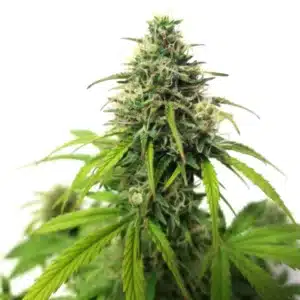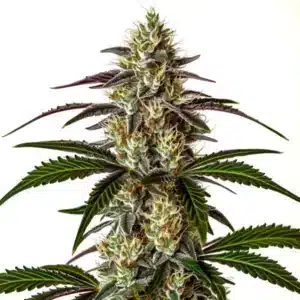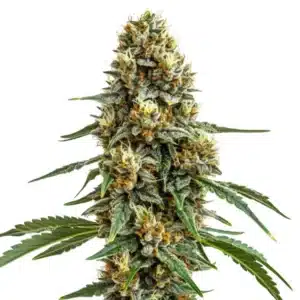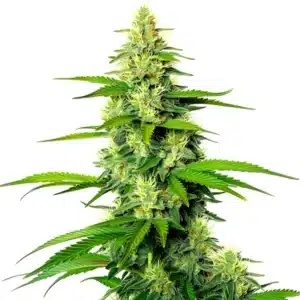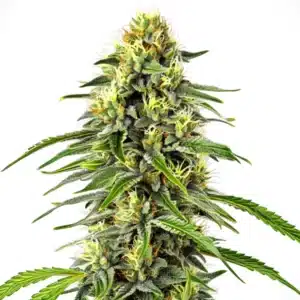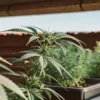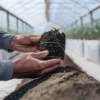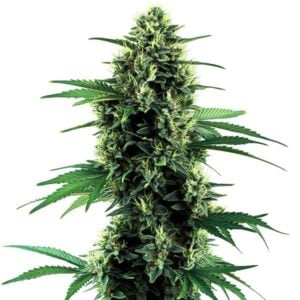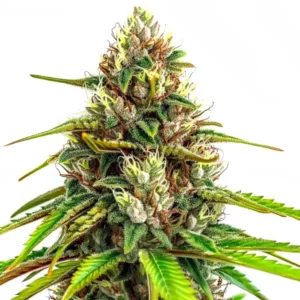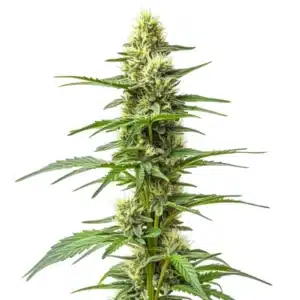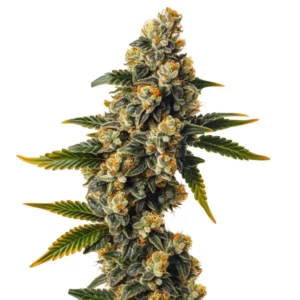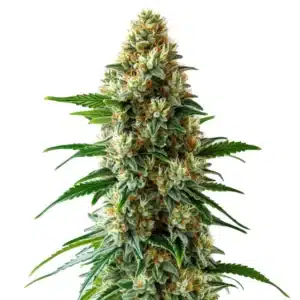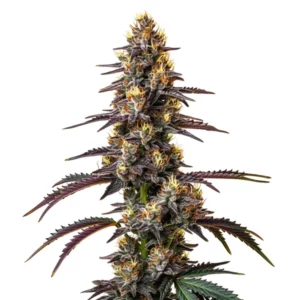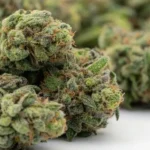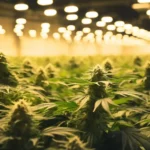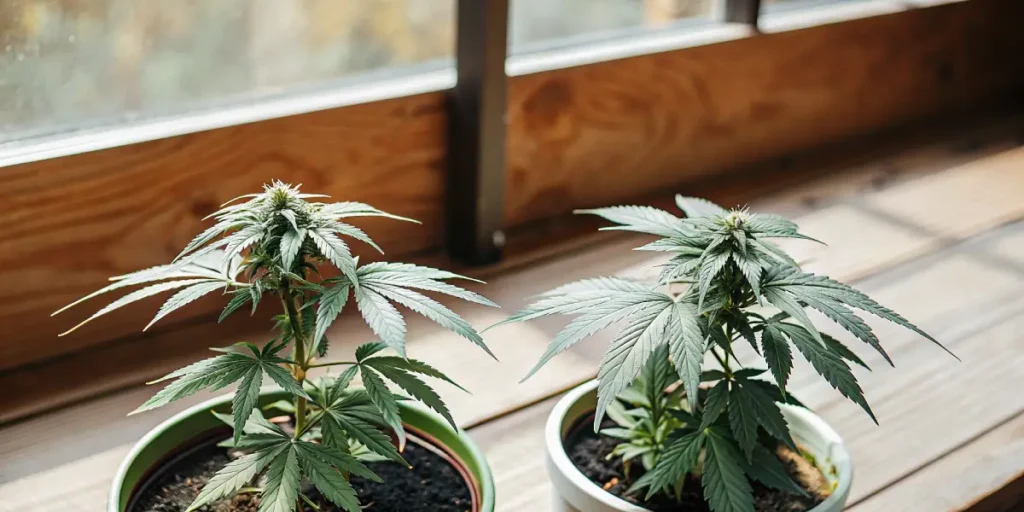
Auto vs Photoperiod for Plant Training
When stepping into the world of cannabis cultivation, one of the first choices you’ll face is growing auto-flowering or photoperiod strains. Each type has its unique benefits and challenges, especially when it comes to plant training. The decision between auto vs photoperiod for plant training can significantly impact your yield and the overall growing experience.
Training techniques differ between these two types, and understanding these differences is crucial for optimizing growth. For instance, auto-flowering strains, like the Original Auto AK, are often less forgiving of stress. Photoperiod strains, on the other hand, provide more flexibility, making them ideal for extensive training methods.
Recommended Strains
To achieve the best results, it’s essential to tailor your training techniques to the specific needs of your chosen strain. Whether you’re growing the resilient Photoperiod Gelato or the compact Original Auto Northern Lights, knowing the nuances of each type will help you maximize your plant’s potential.
Auto-Flowering Cannabis Plant Training Methods
Auto-flowering strains have a fixed lifecycle, which means they flower based on age rather than light cycles. This characteristic limits the time available for training, making it critical to choose the right methods. Low-Stress Training (LST) is a popular choice because it gently manipulates the plant without causing excessive stress.
LST involves bending and securing branches, allowing more light to reach lower parts of the plant. This can be particularly effective with auto-flowering strains, as it promotes better light distribution without hindering growth. Another technique is the use of the Sea of Green (SOG) method, which maximizes space and improves yields by growing many small plants close together.
When considering auto-flowering vs photoperiod plant training techniques, it’s important to recognize the rapid growth stages of auto-flowering strains. This necessitates a strategic approach where timing and gentle handling are crucial. Growers often find that minimal intervention yields the best results, as these plants naturally optimize their growth within their limited cycle.
Moreover, auto-flowering cannabis plant training methods should focus on enhancing the plant’s natural tendency to form a compact and robust structure. Techniques that involve minimal stress and disruption are ideal, as they allow the plant to maintain its vigor and produce quality yields without the risk of stunted growth or delayed flowering.
Benefits of Photoperiod Training for Cannabis Plants
Photoperiod strains, such as the Photoperiod Gelato, are trained differently due to their reliance on light cycles. This allows growers more time and flexibility to apply various training techniques. Topping, for example, involves cutting the main stem to encourage bushier growth.
This method can significantly increase yields by allowing multiple colas to develop. Another effective technique is Screen of Green (ScrOG), where a screen is used to spread out the branches, ensuring even light exposure and promoting a uniform canopy.
The benefits of photoperiod training for cannabis plants extend beyond yield improvement. By manipulating the light cycles and training methods, growers can tailor the plant’s growth environment to maximize resin production and cannabinoid concentration, enhancing the overall quality of the crop.
Photoperiod cannabis yield improvement strategies often include a combination of techniques that promote vigorous growth and structural integrity. This approach not only supports larger yields but also contributes to the plant’s ability to withstand environmental stressors, ultimately leading to a more resilient and productive harvest.
Promos & Deals
Differences in Training Auto vs Photoperiod Cannabis
Choosing between auto vs photoperiod for plant training often depends on your growing conditions and objectives. Auto-flowering strains are typically faster and require less maintenance, especially options like Easy Button Auto, a beginner-friendly cultivar designed for quick growth and resilient performance. However, autos offer limited time for recovery if over-stressed. In contrast, photoperiod strains allow for extended training periods, giving growers more flexibility to shape plant structure and maximize yields.
For new growers, auto-flowering strains like Original Auto AK might be appealing due to their simplicity and quick turnaround. However, experienced growers might prefer photoperiod strains for their flexibility and potential for higher yields.
The differences in training auto vs photoperiod cannabis largely revolve around the growth and flowering cycles. Auto-flowering strains, with their predetermined life cycle, demand a hands-off approach, whereas photoperiod strains offer the luxury of time, enabling a more experimental and tailored training regimen.
Additionally, the longer vegetative phase of photoperiod strains provides a window for implementing complex training methods. This includes combination techniques that blend low and high-stress methods, offering growers a wide spectrum of possibilities to explore and refine their cultivation skills over time.
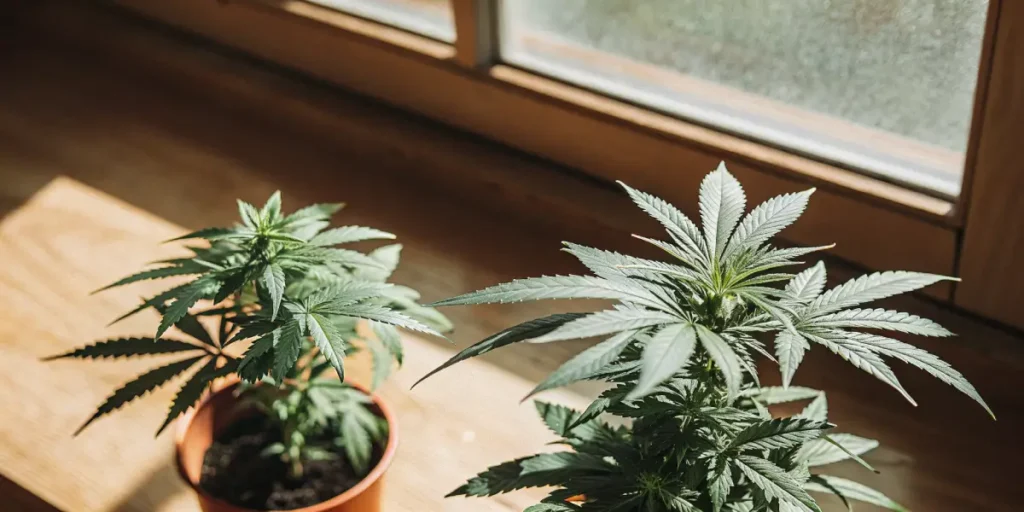
Practical Examples and Real-Life Applications
Consider a grower cultivating Original Auto Northern Lights. This strain benefits from LST due to its compact size. The grower might use garden ties to gently bend branches outward, enhancing light penetration and airflow.
Another example involves a cultivator working with Photoperiod Gelato. This strain can thrive under ScrOG, where the grower carefully weaves branches through a screen, creating an even canopy that optimizes light exposure and supports heavier buds during flowering.
In real-life applications, understanding the nuances of auto-flowering vs photoperiod plant training techniques can make a significant difference in the outcome of a grow cycle. A grower might experiment with hybrid techniques, blending elements from both approaches to accommodate specific environmental conditions or strain characteristics.
Furthermore, documenting the process and results of each training regimen can provide invaluable insights for future grows. This practice allows growers to refine their methods and develop a personalized approach that aligns with their unique goals and cultivation style, whether focusing on speed, yield, or quality.
FAQs
What are the main differences between auto vs photoperiod for plant training?
Auto-flowering strains flower based on age and have a shorter growth cycle, making them less suited for high-stress training techniques. A great example is Pineapple Express Auto, a fast, resilient autoflower known for its easy growth and tropical terpene profile. Photoperiod strains rely on light cycles, offering more time for various training methods, including topping and ScrOG.
Auto-flowering cannabis plant training methods often focus on low-stress approaches due to their limited recovery time. In contrast, photoperiod strains can handle more intensive methods, which can lead to higher yields and more control over plant growth.
When evaluating auto vs photoperiod for plant training, it’s crucial to consider the strain’s adaptability to environmental changes. Auto-flowering strains thrive with consistent conditions, whereas photoperiod varieties can be more forgiving, adapting to fluctuations with minimal impact on growth.
The decision between these two largely depends on the grower’s level of experience and the desired outcome. Beginners may favor the straightforward nature of auto-flowering strains, while seasoned cultivators might appreciate the creative freedom and customization offered by photoperiod strains.
Can I use the same training techniques for both auto and photoperiod strains?
While some techniques like LST can be used for both, others are better suited to one type. Auto-flowering strains benefit from methods that minimize stress, while photoperiod strains can endure more aggressive training techniques. A great example is Gelato x OG Auto, an easy-to-grow auto-flowering strain that responds best to gentle, low-stress training for maximizing yield without slowing its growth cycle.
For instance, topping is generally not recommended for auto-flowering plants due to their limited time to recover, whereas photoperiod strains can benefit significantly from this method, resulting in bushier plants and potentially higher yields.
Knowing the differences in training auto vs photoperiod cannabis is key when deciding on techniques. While LST is versatile, more intensive methods such as super cropping may not be suitable for autos, but can greatly enhance photoperiod plant structure and yield.
Ultimately, the choice of technique should align with the plant’s growth stage and the grower’s goals. Experimentation and observation are essential in determining which methods provide the best balance of growth and stress for each type of strain.
How does training affect the yield of auto-flowering cannabis plants?
Training auto-flowering cannabis plants can improve light distribution and airflow, leading to healthier growth and potentially increased yields. However, it’s essential to avoid over-stressing these plants, as they have less time to recover.
By using gentle methods like LST, growers can enhance the natural shape of the plant, allowing more bud sites to develop and improving the overall harvest. A strain like California Indica x GG Auto, known for its vigorous growth and strong branching, responds especially well to low-stress training, making it easier to boost bud production even in compact spaces. Careful planning and execution are key to maximizing the benefits of training auto-flowering plants.
The short lifecycle of auto-flowering strains means that training must be precise and timely. Even minor errors can lead to reduced yields, making it important for growers to monitor plant response closely and adjust techniques as needed to ensure optimal growth conditions.
Strategic planning in auto-flowering cannabis plant training methods focuses on early intervention. By addressing plant development early in the growth cycle, growers can direct resources toward bud development, ensuring that the plant’s limited life span is used most efficiently.
What are the benefits of photoperiod training for cannabis plants?
Photoperiod training offers flexibility and control, allowing growers to manipulate plant structure for higher yields. Techniques like ScrOG and topping create a more uniform canopy and support denser bud formation.
The extended vegetative period of photoperiod strains means growers can experiment with various methods to find what works best for their specific conditions. This adaptability is one of the main advantages of choosing photoperiod strains for training.
Another of the benefits of photoperiod training for cannabis plants is the ability to fine-tune the growth environment. This control over plant development allows for a more meticulous approach, resulting in higher quality and quantity of the final product. For growers looking for an easy-to-manage option that still delivers impressive results, Purple Skunk Auto is a great example—offering vigorous growth, resilient genetics, and dense, aromatic buds.
Moreover, the adaptability of photoperiod strains to different training techniques enables growers to explore innovative methods that can lead to breakthroughs in cultivation practices. This experimentation can result in unique strains with desirable traits, enhancing both the grower’s personal satisfaction and marketability of the crop.
Which cannabis strains from Blimburn Seeds are suitable for beginners?
For beginners, auto-flowering strains like Original Auto AK and Original Auto Northern Lights are excellent choices. These strains are easy to grow and have shorter flowering times.
Photoperiod strains like Photoperiod Gelato can also be suitable for those ready to take on more involvement. They offer more control over the growth process, making them ideal for those interested in experimenting with different training techniques.
Beginners often appreciate the forgiving nature of auto-flowering strains, as they require less intervention and grow swiftly. This allows new growers to focus on learning the basics of cultivation without the added pressure of complex training regimens.
For those eager to dive deeper into cultivation techniques, photoperiod strains offer an engaging challenge. The opportunity to manipulate growth through light control and training techniques can be a rewarding learning experience, providing insights into the intricate art of cannabis cultivation. However, if you prefer a more accessible entry point before tackling photoperiods, the Master Kush Auto is an excellent option—easy to grow, fast to flower, and ideal for building confidence while still achieving top-quality results.


